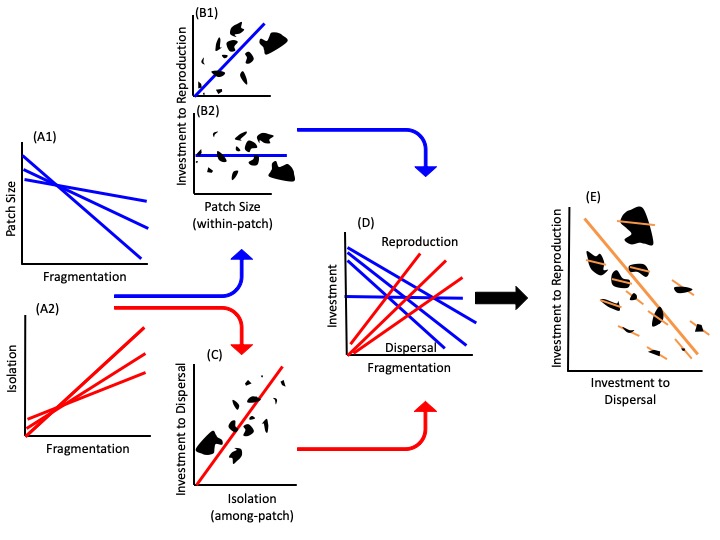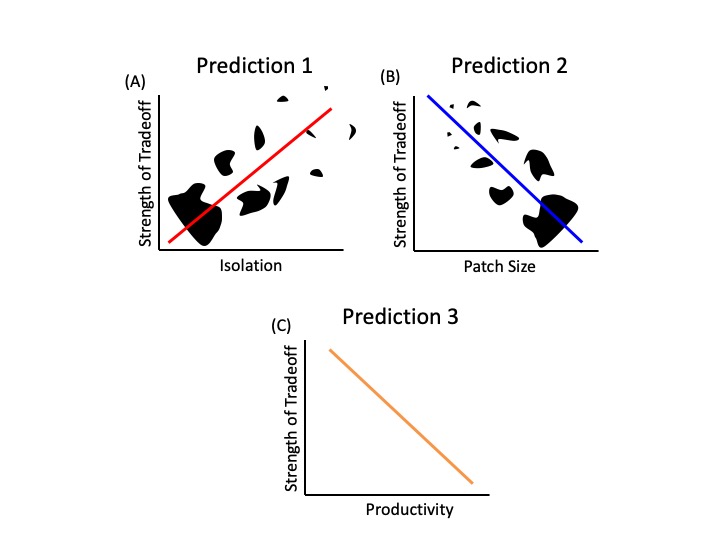Ziv and Davidowitz. 2019. When landscape ecology meets physiology: effects of habitat fragmentation on resource allocation trade-offs. Frontiers in Ecology and Evolution. https://doi.org/10.3389/fevo.2019.00137
Fragmentation increases among-patch isolation and decreases patch size. To persist, animals must be able to translate the variation imposed by fragmentation into adaptive energy allocation strategies that enable populations to avoid extinction. Hence, physiological adaptations are expected to reflect changes in landscape configuration, especially in the size of the natural habitat patches and degree of isolation among them.
We proposed a novel, integrative conceptual framework in which spatial characteristics of the environment lead to specific life-history traits that increase survival (at the individual level) and decrease the likelihood of extinction (as an emergent property at the population level). Consequently, a resource allocation trade-off between the life-history traits of reproduction and dispersal along a fragmentation gradient should emerge. Populations occurring in patches of different sizes and isolations along gradients of fragmentation and productivity are predicted to exhibit differences in the strength of the dispersal-reproduction trade-off. Emerging from this framework are several explicit and testable hypotheses that predict that the dispersal-reproduction trade-off will be shaped by landscape heterogeneity imposed by fragmentation. Hence, this trade-off serves as the mechanistic link that translates environmental variation created by fragmentation into variation in species abundances and population dynamics by lowering local extinction probability and increasing overall population persistence.


